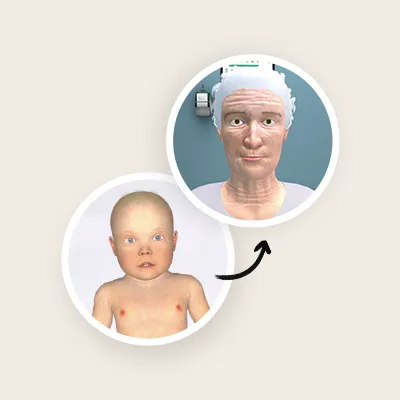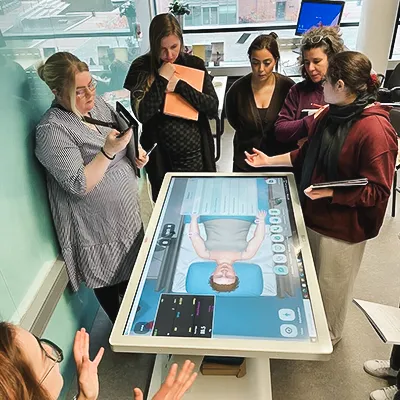Once in a while teachers and institutions that work with Body Interact – Virtual Patients have the chance to share their strategies and how they use it with a larger audience. This time, on a webinar promoted by the Body Interac team, we had the opportunity to hear from Leila Sales – Nursing Professor – from the Portuguese Red Cross School of Higher Health.
Recently, we have witnessed an increment of higher education institutions making the best of their simulation resources, and combining Virtual Patients with other tools they have available in the Simulation Centres. This combo not only optimizes existing resources but can also boost students’ learning progress.
Virtual Patients in Nursing Education
The Portuguese Red Cross School Lisbon Health School focuses on the quality, innovation, and excellence of simulation educational activities. Thus, as a reference institution, they are able to promote the best experience for their students.
After 5 years of experience using Body Interact, it is now becoming an everyday practice in the institution, with professors and students demanding more of it.
The Virtual Patient Simulator is implemented across the curriculum of the Nursing Degree and not only in theoretical lessons in loco and remotely, but also by students in Individual and/or Group competitions and in Simtegration activities.

Combining Virtual Patients with other simulation tools
As mentioned previously, one of the teaching approaches used is Simtegration – Combining Body Interact with other simulation resources. This approach helps students to develop hard and soft skills in a controlled environment before performing the same procedures on real patients. It has become an important part of the Nursing Curriculum by having the student at the center of the learning process, allowing the faculty to engage students with the aim of better understanding and managing clinical situations.
This approach provides extended benefits, namely:
- Promotes the integration of the clinical reasoning skills that Body Interact fosters with psychomotor skills;
- Optimizes existing simulation resources;
- Promotes Knowledge-Skills-and-Abilities (KSA) integration;
- Presents itself as a strategy for interdisciplinary team training;
- Provides an active, comprehensive, holistic, and engaging learning experience.
Simulation Checklist – 8 steps to implement it in your Institution
The Body Interact team has created a checklist that has shown to be effective in the preparation of this type of session without missing any important step:
- Establish the learning goals of the activity
- Determinate your audience
- Select the clinical scenario
- Identify the priority interventions you
- Recognize the simulation tools, materials, and supplies you will need (low- and high-fidelity manikins, task trainers, devices, etc.)
- Share the essential information with the participants
- Define the assessment form and debrief key-topics
Interested to review the Simtegration – Skills Lab Integration Guide?
Schedule a 15 min meeting with the Body Interact team
Mateus Magalhães, a 3rd year Nursing student, extremely familiar with this approach for practice and evaluation, also shared his feedback with the audience. He mentioned that Body Interact “can increase the communication skills and improve critical decision-making”, providing a way to “see any symptoms that the patient presents without having to imagine what it would look like” and to “do all procedures without moving around”.
Lastly, Professor Leila highlighted that the worldwide population “wants the best health professionals and the best care, with safety and quality” and to achieve that, the right direction is to “provide the best possible education”.
Review the Body Interact webinar and get to know how the Portuguese Red Cross Lisbon Health School is integrating Virtual Patients in their Nursing curriculum:
by Carolina Ferreira – Customer Trainer | Registered Nurse

& Daniela Abreu – Body Interact Instructional Designer









